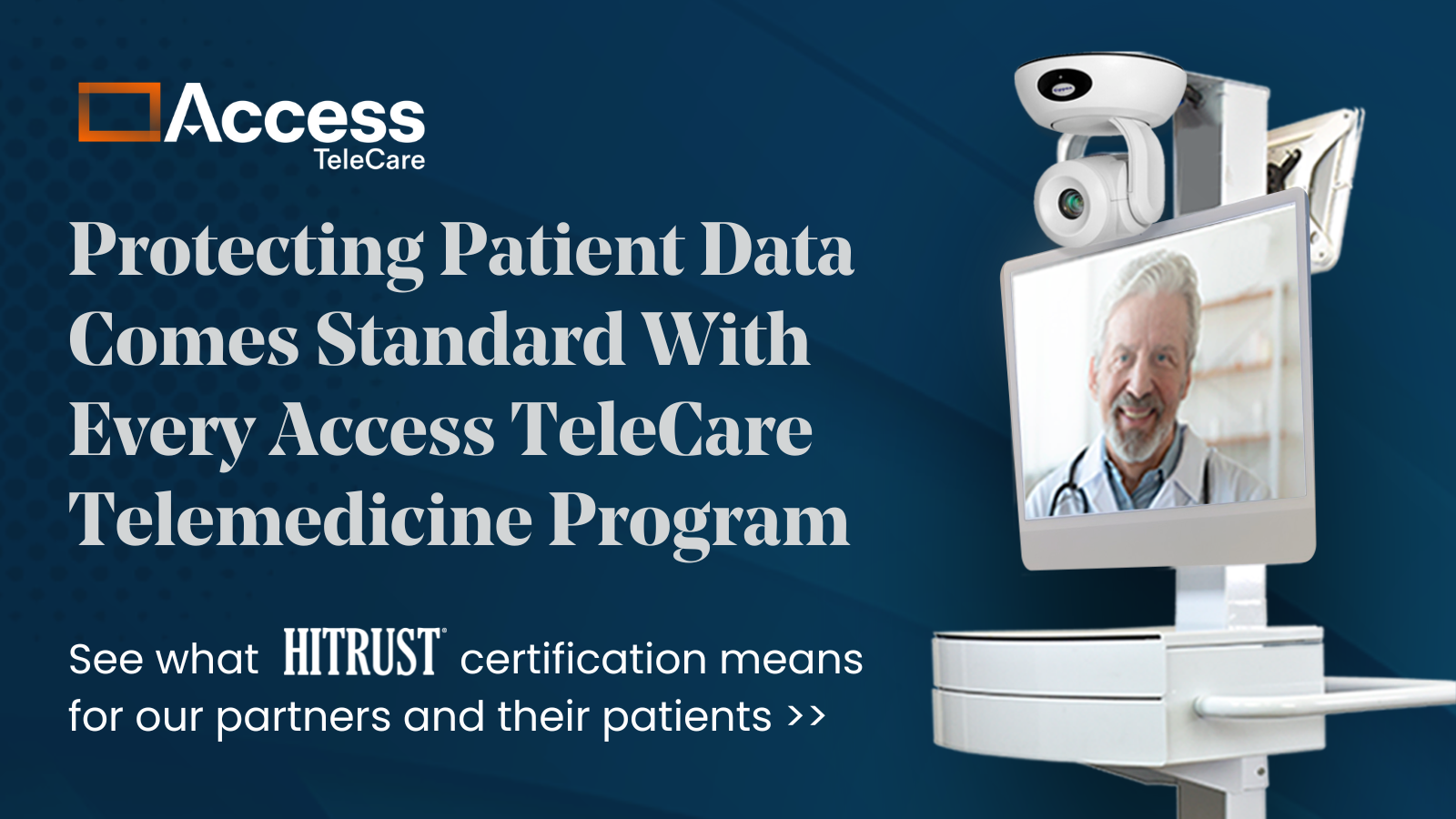The transition to virtual care as America went on lockdown from the pandemic was rapid and chaotic. Many hospitals hastily put together telemedicine programs to replicate in-person care with phones and online conferencing software. Many healthcare organizations are now looking to expand their use of telemedicine, but know they need to be strategic and thoughtful in building an enterprise program. Jason Hallock, M.D., Access TeleCare chief clinical innovation officer, offers guidance on how to operationalize hospital-based telemedicine for those organizations who want to get it right.
“If ever there was a time to operationalize telemedicine in your organization, it is right now,” — Dr. Jason Hallock
So how does a hospital go from merely replicating visits to building a telemedicine program that is efficient, scalable, and flexible and delivers the same quality of care? Start with these five steps:
1. Assess Your Pandemic Performance
How has your health system done so far? You need an after-action report. Ask yourself: What were the bottlenecks to care delivery? What worked, and what didn’t work? Can you use the same technology when enforcing HIPAA privacy and security regulations? Is your technology scalable? Are the workflows scalable?
For any program to be successful, it must work across the four elements of strategy, structure, systems, and culture. The first wave of COVID-19 in your health system provided a stress test for how your telemedicine systems worked under pressure.
2. Integrate Your Workflows
We always say telemedicine’s magic is about the workflows. Acute care telemedicine is fast-paced, and patients’ lives are at risk in time-sensitive situations. The workflows must flow seamlessly between telemedicine and onsite efforts.
A simple case where we often see problems is ED tele-triage. It’s an easy enough workflow to integrate telemedicine and triage to help you see patients quickly and safely and determine their needs. The patient arrives, and a provider at a remote site provides triage quickly.
But when your hospital is at capacity, and the already-seen patients are still waiting for a room in a transitional intake area while simple orders like x-rays and strep tests go unfulfilled, a workflow bottleneck can affect the transition from triage to care. If you haven’t addressed the workflow to get those patient tasks done, how effective can the system be? Workflows matter. Efficiency matters. The flow of patients into and through the system as they interact with both onsite staff and telemedicine providers must be seamless and effective.
3. Understand the Value of Fractionalized Work
Incredibly, it took only one month of COVID-19 for the entire U.S. healthcare system’s financial model to break down completely. The sudden evaporation of significant revenue streams like elective surgery, coupled with needed surge expenditures, pushed many health systems to the brink of financial ruin.
Transformation is the only viable option. The answer to our broken hospital and healthcare economics should not be a rush to reboot high margin elective procedures but instead provide more efficient core services in the hospital, balanced with efficiencies in the outpatient world.
Telemedicine is how you gain that efficiency. More specifically, it should not be bolted on top of the existing care model, but in place of it in scheduled doses. The great thing about telemedicine is time does not need to be measured out in full days or even “half days,” there are ways to fractionalize the work to just a few hours or even an hour per day.
In the brick and mortar arena, it is not realistic to add a half-day or a half shift. However, you can add telemedicine easily onto other shift work, or even have small blocks of time where providers can give care from their home. Fractional coverage unlocks potential efficiency.
4. Measure Quality and Outcomes
As you move towards increased telemedicine, understand that quality is impacted across three critical facets: operational metrics, quality of physicians, and standardization.
In telemedicine, much as with ED care, timely care, and effective care is quality care. To study quality, measure all the pieces in between a consult request and getting the provider to the bedside (via video) and ensure that those numbers reflect quality care and excellent outcomes.
Ensure, too, the quality of your physicians. We are accredited by The Joint Commission, so our physician group goes through FPPE and OPPE with ongoing assessments, and continuous chart reviews just like all hospitals are required to do.
The goal in every effort is to build standardization of quality no matter how care is served; the quality of care and the quality of physicians must be similar in both telemedicine and onsite. Telemedicine can help standardize and reinforce robust protocols across the onsite departments, as teams work together across those areas more frequently and build standardized workflows.
5. Expand Access to Care and Serve the Underserved
Healthcare is mission-driven at its heart. Telemedicine can help increase access to care in your community. Wherever possible, use your telemedicine investment to reach underserved groups, or to level the access to care where imbalances exist. Telemedicine will be a great equalizer in the future for our most vulnerable groups.
But, the old adage, “No Margin, No Mission,” still holds true. The fault lines in our healthcare system are exposed. The medical industry shed 1.4 million jobs in April alone. Those numbers rebounded somewhat in May, driven primarily by the return of dentists’ offices and other independent physician offices. But hospitals continued layoffs; in April, they cut nearly 135,000 positions, and in May, they cut another 26,700.
Imagine any other country in the world shedding hundreds of thousands of medical expert jobs from hospitals during the worst pandemic in 100 years. First-quarter losses industry-wide tallied into the hundreds of millions of dollars, delaying mergers and acquisitions. As the year and the virus continue to progress, health systems and states are now measuring losses in the billions.
We must evolve to survive, and it’s clear that efficient and effective telemedicine is at the heart of our evolution.
****
If you are interested in learning more about operationalizing your telemedicine program, please contact us for a working session.







